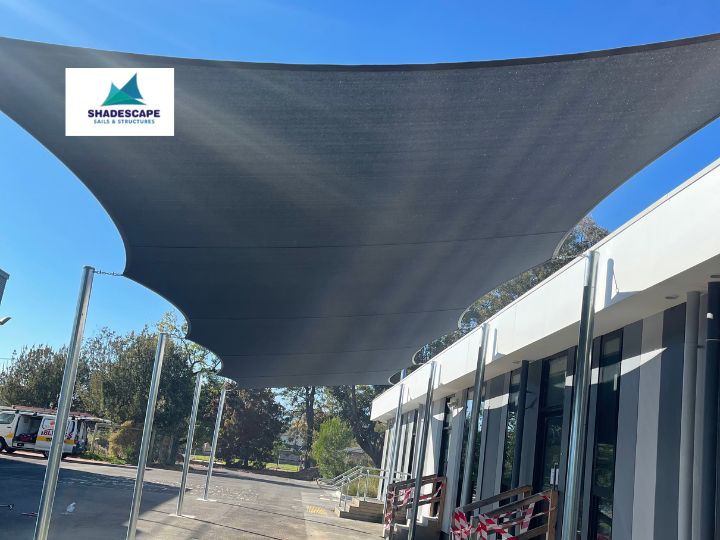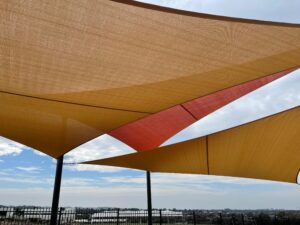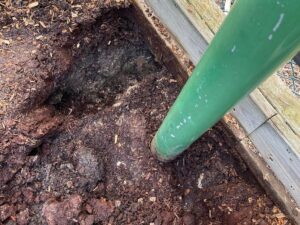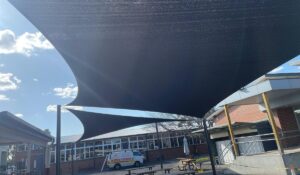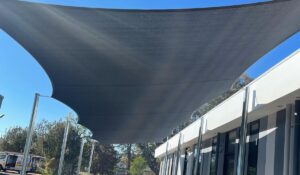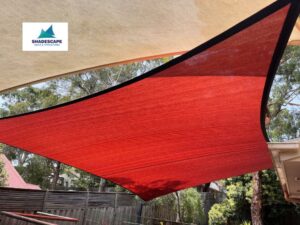Fabric weight is the most important factor that determines the performance, durability and effectiveness of a shade sail. The better the quality and thread count of the fabric used in the shade, the higher is the performance, efficiency and convenience to use. Shadescape Sails and Structures has an inventory full of all types, sizes and materials of shade sails. Get in touch with one of the experts and invest in the most appropriate shade sails according to your application requirement. Whether you want a commercial shade solution or domestic shade sail, we have got you sorted.
Why Is Fabric Weight Important?
Fabric weight means the material per area and is generally measured in terms of grams per square metre (gsm). Shade sails are available in various fabrics weighing from 150 gsm to 600 gsm or more. This means that factors such as UV protection, wind resistance, water drainage, and general durability vary with the different weights of the fabric used. Given below is a detailed account of how fabric weight affects the efficiency of your shade sails.
UV Protection
The most important reason for installing shade sails is protection against UV rays. The fabric determines the ability of a shade sail to block harmful ultraviolet rays. Heavier fabrics, and more commonly those having the highest gsm ratings, tend to provide better UV protection.
Densely Woven
Heavier fabrics are usually tightly woven and thus leave almost no gaps for UV radiation to come in. Such dense shade structures tend to block a larger percentage of UV radiation, which means greater protection to individuals and materials underneath the sail. Whether its the people or furniture under the shade, protection is guaranteed.
UV Treatment
There are treated shade sail fabrics that have UV inhibitors, and are better at resisting sunlight damage. However, the effectiveness might depend on its weight.
Wind Resistance
Another significant factor that affects the performance of shade sails is their capability to resist the wind. In this case, the fabric weight is a prime determinant of how the shade sail would react to strong winds.
Stability
Heavier materials are more stable in the wind. The additional weight resists fluttering and flapping. Therefore, they have less chances to collapse or fail. A lighter material will catch in the wind and, consequently shift more stress to the sail and its attachment points.
Installation Considerations
It is important to consider the weather conditions in the region for installation of shade sails. Regions with high winds should have more massive materials to be used for stability and lesser damage. Proper tensioning of this fabric during installation can increase the resistance of this sail to strong winds.
Water Drainage
Shade sails are designed in such a way that there is a slope to drain water, and avoid pooling. If water stays on the sails for long, it results in sagging or tearing of their structure.
Water Resistance
In general, dense fabrics also tend to be more water-resistant, because they generally have tighter weaves. Tight threads minimise the penetration of water into them. It enables the formation of water beads on the surface and running off of it rather than soaking into the fabric.
Drainage Capacity
You can avoid the pooling of water through proper installation and accurate assembly. You should keep the sails tight to provide an angle so that the water can run off. However, if you use a lighter material in heavy rain areas, along with low tension or angles, then water may collect and cause sagging.
Longevity
Compounds with a higher density are relatively sturdier and better at withstanding environmental forces compared to compounds with lower density.
Tear Strength
Compounds that tend to be heavier normally show higher levels of tear strength due to their high density. The weaving of the good quality fibres makes them withstand the harsh conditions. Whether be it extreme cold, snowfall, rainfall, hail or scorching heat in the summers.
Durability
The heavier the fabric, the longer the shade sail might last. Lighter fabrics can be cheaper in the short term but may not hold up as well outdoors as heavier ones do. Spending money on a heavier fabric can pay long-term. It results in lesser wear and tear, thus saving you from expensive maintenance and repair services. However, you can get all the shade sails installation, assembly and maintenance services at affordable rates at Shadescape Sails and Structures. We have highly experienced staff with maximum training and skill.
Aesthetic Appeal
Although functionality is crucial, you should not rule out aesthetics when choosing a shade sail. There is a huge difference in the appearance and feel of the sails based on the weight of the fabric used.
Drape and Shape
Over all, heavier fabric makes a deeper drape. It gives you cleaner lines and more well-defined shape, creating a beautiful shade sail effect in outdoor spaces.
Conclusion
The performance as well as the life cycle of shade sails depends on the weight of the fabric used. Generally, heavier shade sails provide more UV protection, wind resistance, water drainage, and durability than thinner shade sails. Although it is true that the more expensive the shade sails is, the higher it pays off in the long run.

